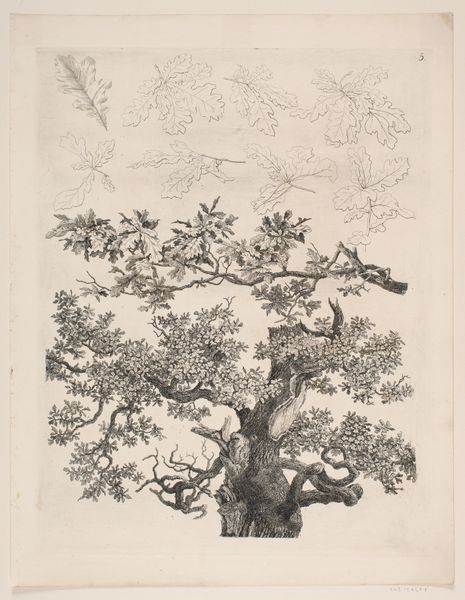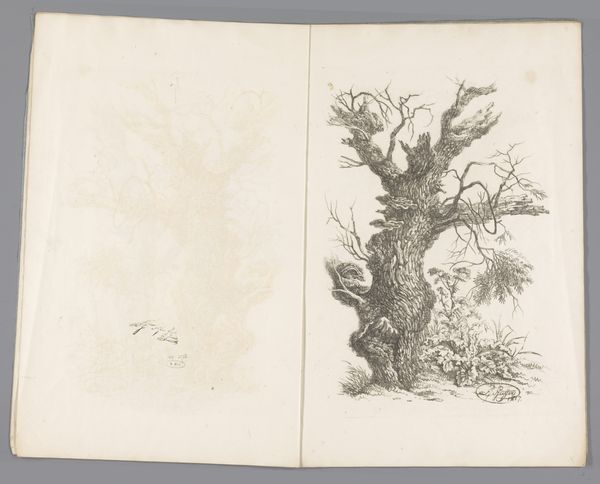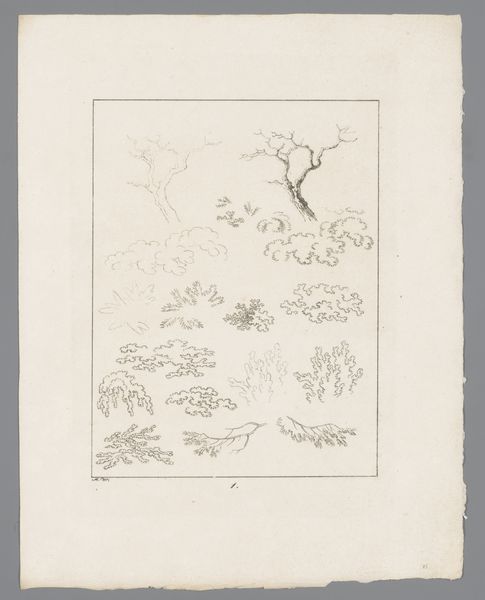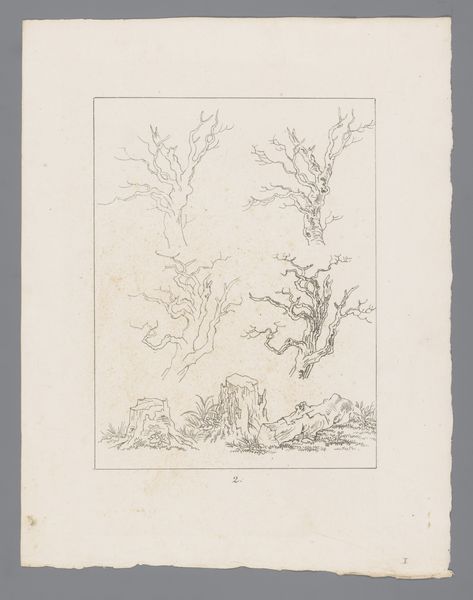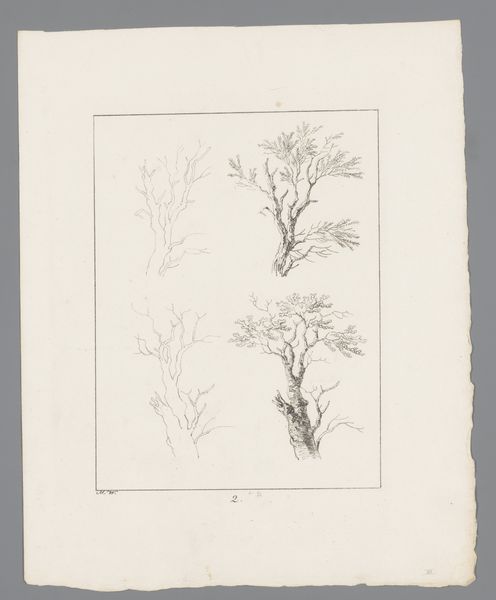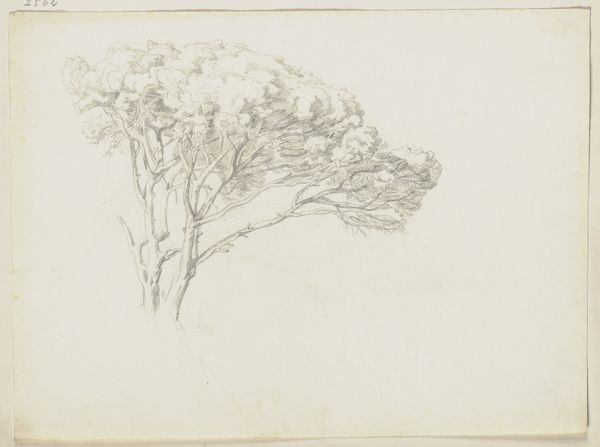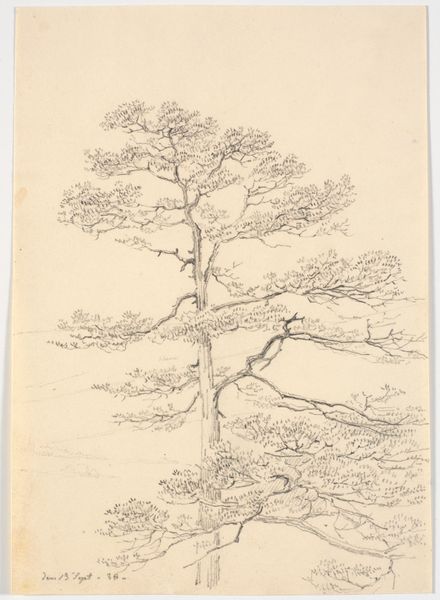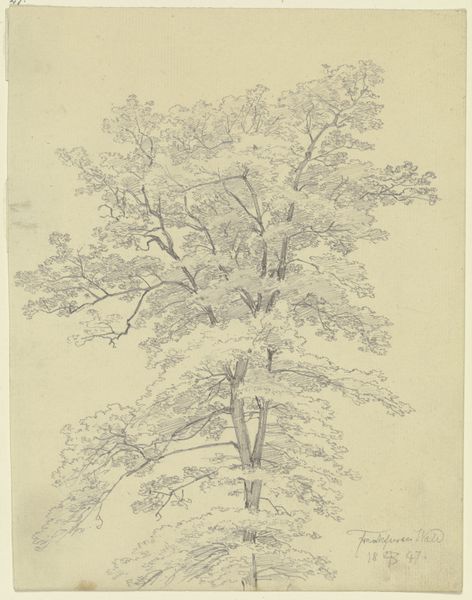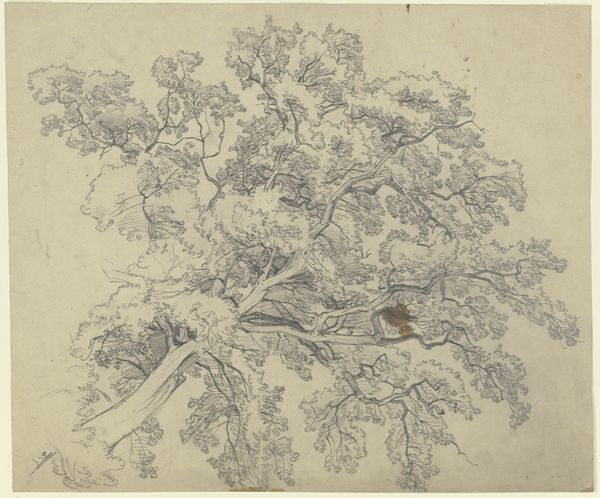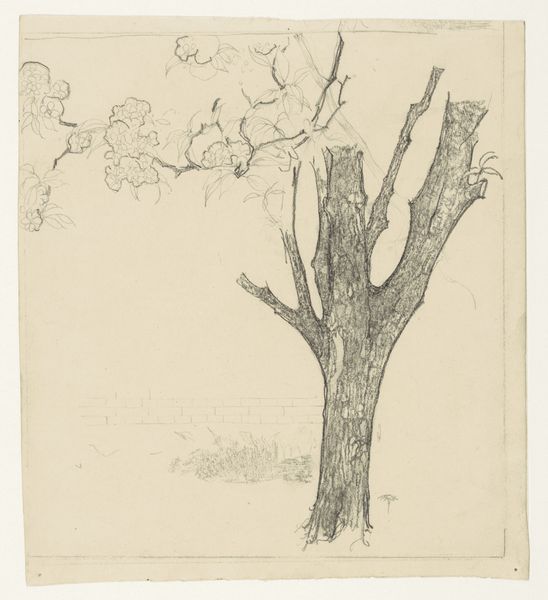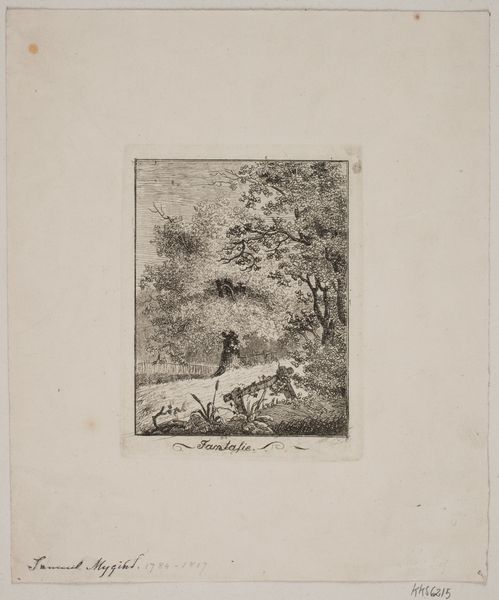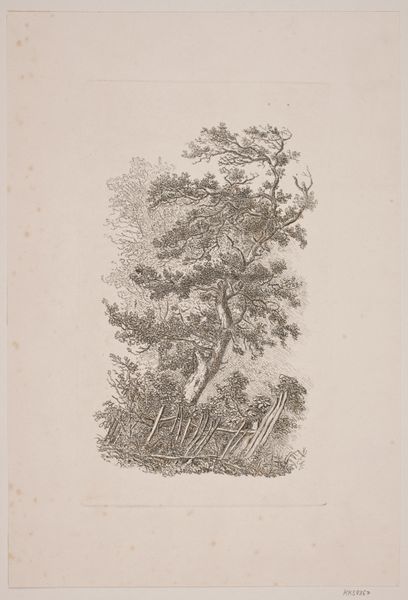
"Studier efter Naturen med Hensyn til Landskabstegning af S.H. Petersen", nr. 1 1816
0:00
0:00
drawing, print, pencil, graphite, engraving
#
drawing
# print
#
pencil sketch
#
landscape
#
etching
#
pencil
#
graphite
#
academic-art
#
engraving
#
realism
Dimensions: 413 mm (height) x 349 mm (width) (plademaal)
Curator: It’s amazing to consider this detailed pencil and graphite drawing titled “Studier efter Naturen med Hensyn til Landskabstegning af S.H. Petersen”, nr. 1" by Søren Henrik Petersen, created in 1816. Editor: Immediately, I see a very intentional study of botanical specimens and the linear grace of branches. It strikes me as methodical but possessing an intimate feel with the natural world. Curator: Indeed, the means of production here speak volumes. Petersen’s dedication to representing these specific natural forms is significant; we are essentially observing an example of 19th-century artistic labor. Consider the repetitive etching of individual leaves and their meticulous arrangement. Editor: The very act of carefully selecting and studying leaves and branches becomes a political one when viewed through the lens of accessibility and knowledge production. Who gets to study nature? Whose understanding of the natural world is validated and archived? The drawing speaks to the scientific lens afforded to few at the time. Curator: Absolutely. Petersen is not simply depicting pretty flora. The academic-art style employed underscores the scientific and pedagogical ambitions evident during this period, bridging art, scientific illustration, and educational exercises. Editor: Let's think about the act of 'representing' nature itself. There’s a dialogue here between scientific objectivity and artistic interpretation. What does it mean to render the natural world through an artistic lens and whose stories are woven into that rendering? Curator: The consumption of these naturalistic depictions in printed format would’ve aided the circulation of this type of knowledge among artistic and academic communities. The role of printed copies facilitates the democratisation of academic observation, if only slightly, expanding who might find value in such representations. Editor: I see the seeds of environmental consciousness here too. Recognizing how cultural forces interact with environmental awareness and stewardship becomes visible within a network of economic and social relations. Who owned the trees? Who labored to up keep them and who had access to learn about them through studies like these? Curator: Well, looking at it from the perspective of art-making, it gives insights into the 19th-century artistic process itself. The combination of pencil and engraving methods is a technique for reproduction and the detailed nature serves more than just the simple process of documenting a landscape for posterity. Editor: Yes, it truly invites contemplation on art's role in reflecting—and shaping—our engagement with nature across time and class. The question is, whose nature and for whom? Curator: Exactly, and the way he has explored it through academic study and material processes certainly helps bring to life our conversation on this beautiful work. Editor: I completely agree. Analyzing "Studier efter Naturen" enriches our perception of landscape as a genre.
Comments
No comments
Be the first to comment and join the conversation on the ultimate creative platform.
